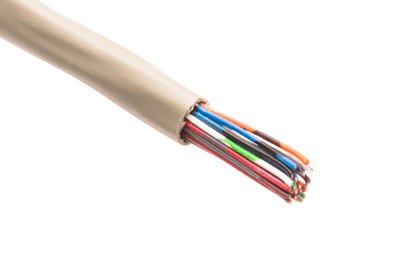
VoIP Cheat Sheet – N2Net’s House Rules
In my family we play Pinochle. It’s a card game with a universal set of standard rules. Like many families who enjoy games together, we’ve adapted our game with a set of house rules that make Pinochle at the Moorman house much more enjoyable than the same game played down the street at the Winston’s. At least that’s what my Grandma will tell you.
Just like my family game of Pinochle, VoIP has its own set of universal rules that the industry follows, but we have our own house rules that make our VoIP more fun and easier to sell. This guide will hopefully clear up some of the confusion around N2Net VoIP vernacular and offer clients and agents a handy cheat sheet with the N2Net house rules.

N2Net Definition: The IP registration from the PBX to the N2Net Soft switch.
How many are needed? 1
Commonly confused with: Call Path
N2Net Definition: The IP registration from the PBX to the N2Net Soft switch. Enhanced SIP trunks include transparent failover (disaster recovery).
How many are needed? 1
Commonly confused with: Call Path, SIP Trunk
Call Path
N2Net Definition: The virtual path on which a telephone call travels. Call Paths live inside the SIP trunk. All Call Paths include unlimited inbound. Usage is only billed for outbound.
Visual – the colored wires in the picture below represent call paths. The white casing surrounding the colored wires would be the SIP Trunk.

How many are needed? As many as you require for the number of concurrent calls needed at the client site. 100k per call is required, so the number of call paths able to be provisioned in a SIP trunk will be dependent upon the available bandwidth at the client site.
Commonly confused with: SIP Trunks
Call Path (Unlimited Use)
N2Net Definition: The virtual path on which a telephone call travels. Unlimited use call paths include unlimited local and long distance outbound usage for that path. All Call Paths include unlimited inbound.
How many are needed? As many as you require for the number of concurrent calls needed at the client site. 100k per call is required, so the number of call paths able to be provisioned in a SIP trunk will be dependent upon the available bandwidth at the client site.
Commonly confused with: SIP Trunks
Virtual PRI (SIP Handoff)
N2Net Definition: A product that combines one Enhanced SIP Trunk, 23 (Unlimited Use) Call Paths, 25 DID’s, and 10 Enhanced (DR) extensions. The Virtual PRI is delivered from N2Net’s Soft Switch directly to the end user’s IP PBX as SIP. CANNOT support faxing.
How many are needed? One per 23 concurrent calls. 100k per call is required, so while the Virtual PRI comes with 23 (Unlimited Use) Call Paths, the actual number of paths able to be utilized will be dependent upon the available bandwidth at the client site.
Commonly confused with: Traditional PRI/Virtual PRI (TDM Handoff)
Virtual PRI (TDM Handoff)
N2Net Definition: A product that combines one Enhanced SIP Trunk, 23 (Unlimited Use) Call Paths, 25 DID’s, and 10 Enhanced (DR) extensions. The Virtual PRI is delivered from N2Net’s Soft Switch to a gateway. From the gateway, the calls are delivered to the client’s PBX as PRI signaling.
How many are needed? One per 23 concurrent calls. 100k per call is required, so while the Virtual PRI comes with 23 (Unlimited Use) Call Paths, the actual number of paths able to be utilized will be dependent upon the available bandwidth at the client site.
Commonly confused with: Traditional PRI/Virtual PRI (SIP Handoff)
DID
N2Net Definition: Direct Inward Dial – Standard Phone Number
How many are needed? As many as the client has or needs. A DID can be ported away from an existing carrier to a new carrier, or new DIDs can be set up for clients. DIDs are a monthly recurring cost and carry one-time porting or setup charges
Commonly confused with: Extension/DID with CNAM Control
DID with CNAM Control
N2Net Definition: Direct Inward Dial – Standard Phone Number with control over Caller ID Name.
How many are needed? As many as the client has or needs. DID with CNAM control is more expensive per month than a standard DID ($12 versus $5). Clients typically use this product with their main number and then use standard DIDs (caller ID number, not name) for their internal users.
Commonly confused with: DID/Extension
Univoice Extension
N2Net Definition: Extensions are people or places that reside inside a phone system. At N2Net, extensions live inside our Hosted PBX product. Extensions include all features of the PBX like Voicemail, call routing, Voicemail delivery to email, etc.
How many are needed? As many as the client has or needs.
Commonly confused with: DID/SMB Seat
Univoice SMB Seat
N2Net Definition: Used with the N2Net Hosted PBX (Univoice product). A seat is a bundled package for an end-user (person). A seat includes one extension, one call path, one DID, and unlimited local and long distance usage.
How many are needed? Univoice seats are typically used in smaller installations of ten people or less.
Commonly confused with: Extension
To learn more about becoming an N2Net Agent, click here:
